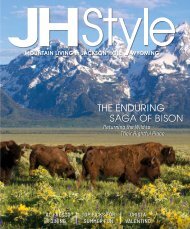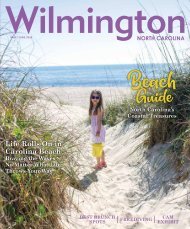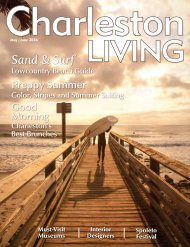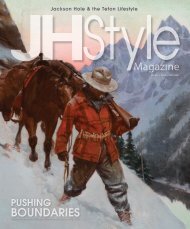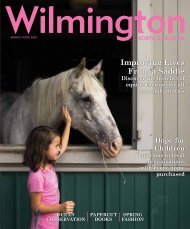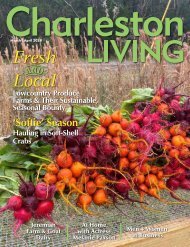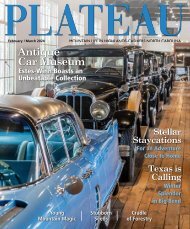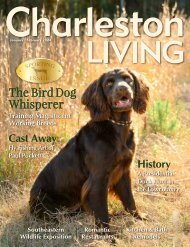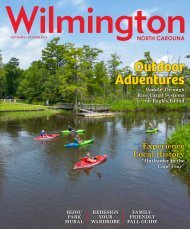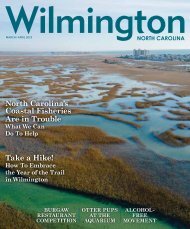Charleston Living Magazine Nov-Dec 2023
Charleston SC - The official city magazine for Charleston SC since 2012. Charleston Living Magazine is the authority on living the good life in Charleston, Mount Pleasant, Summerville, Isle of Palms, Sullivan's Island and Folly Beach, SC, showcasing homes and design, restaurants, art, fashion, business and more.
Charleston SC - The official city magazine for Charleston SC since 2012. Charleston Living Magazine is the authority on living the good life in Charleston, Mount Pleasant, Summerville, Isle of Palms, Sullivan's Island and Folly Beach, SC, showcasing homes and design, restaurants, art, fashion, business and more.
You also want an ePaper? Increase the reach of your titles
YUMPU automatically turns print PDFs into web optimized ePapers that Google loves.
fun and interesting,” Donnelly said.<br />
The first thing to know about birding is<br />
that it’s a modest and observant activity; it<br />
requires stillness and observation where you<br />
use both your eyes and your ears. It’s quite<br />
a marvel to see different behavior patterns<br />
and behavior of bird species as they scour<br />
for food—coastal shorebirds like egrets and<br />
herons look for their breakfast (fish, bugs and<br />
insects) in the flats of the river so still they<br />
are like statues, and then moving with very<br />
deliberate, slow steps typical of wading birds<br />
that hunt on the edge of the water.<br />
Other birds are more frantic, bobbing<br />
back and forth, beak-first, throwing all caution<br />
to the wind.<br />
The latter—and a species that has already<br />
arrived for the winter—include small<br />
songbirds called a palm warbler.<br />
“They like to forage on the ground and<br />
in lower vegetation. They have yellow coloring<br />
to them and a brown strip. If you go to a<br />
park and you see a little bird on the ground,<br />
it's probably going to be a palm warbler. They<br />
like to pump their tails, so they're easy to pick<br />
out due to that tail behavior,” said Donnelly.<br />
Useful tools for birders around the world<br />
are top-of-the-line binoculars and a birding<br />
spotting scope. Donnelly’s scope is 35 times<br />
the magnification of human eyesight. Observing<br />
the birds through the scope brings<br />
these creatures inches from your eyes with<br />
intricate, high-definition details—feathers<br />
(Opposite): Belted Kingfisher, Pitt Street Bridge;<br />
(Clockwise): American White Pelican, Bulls Island,<br />
Cape Romain NWR; American Avocet, Santee<br />
Coastal Reserve WMA; Dunlin, Lighthouse Inlet<br />
Heritage Preserve; Least Sandpiper, Lighthouse<br />
Island, Caper Romain NWR<br />
<strong>Nov</strong>ember/<strong>Dec</strong>ember <strong>2023</strong> | 71



